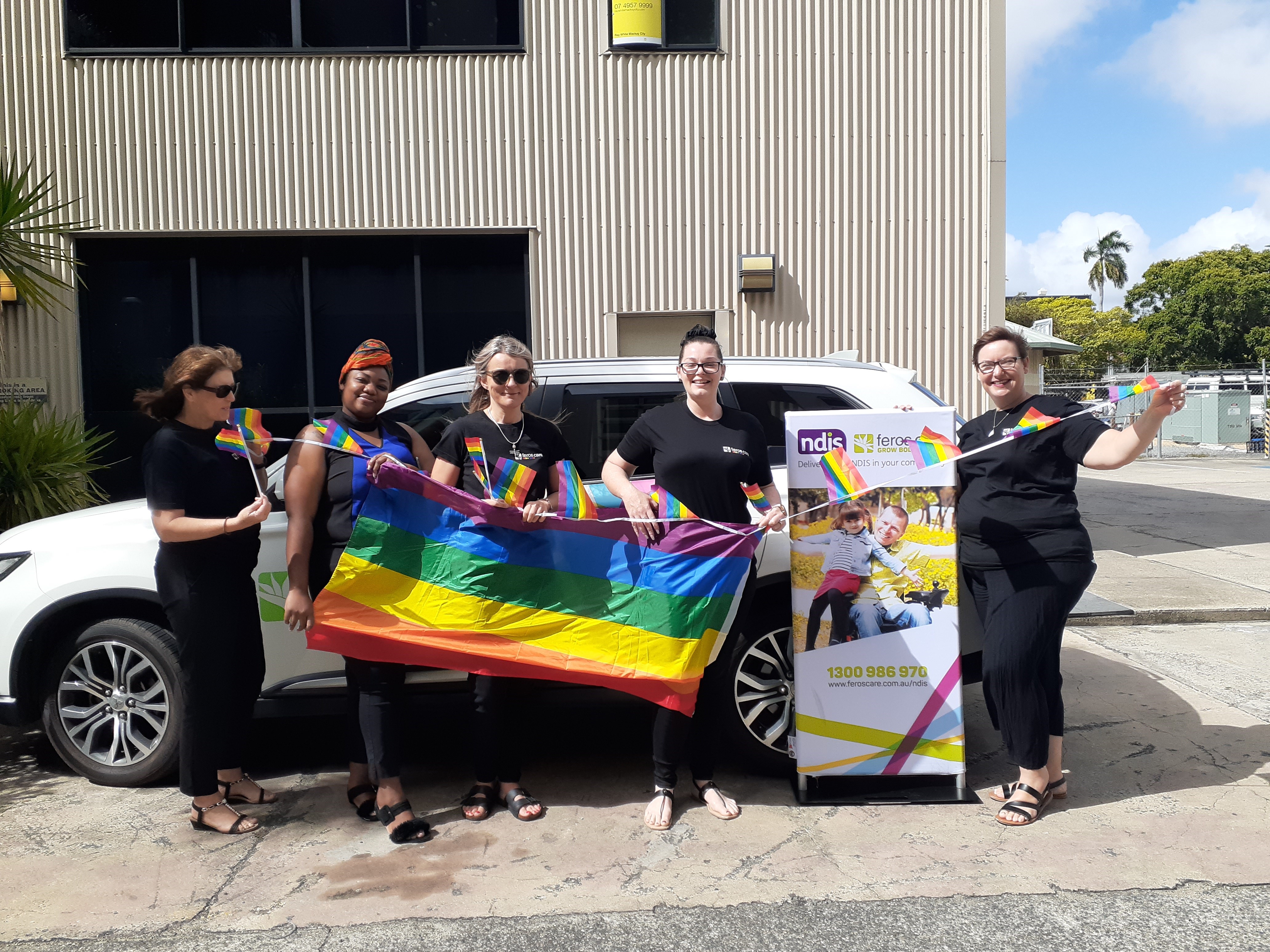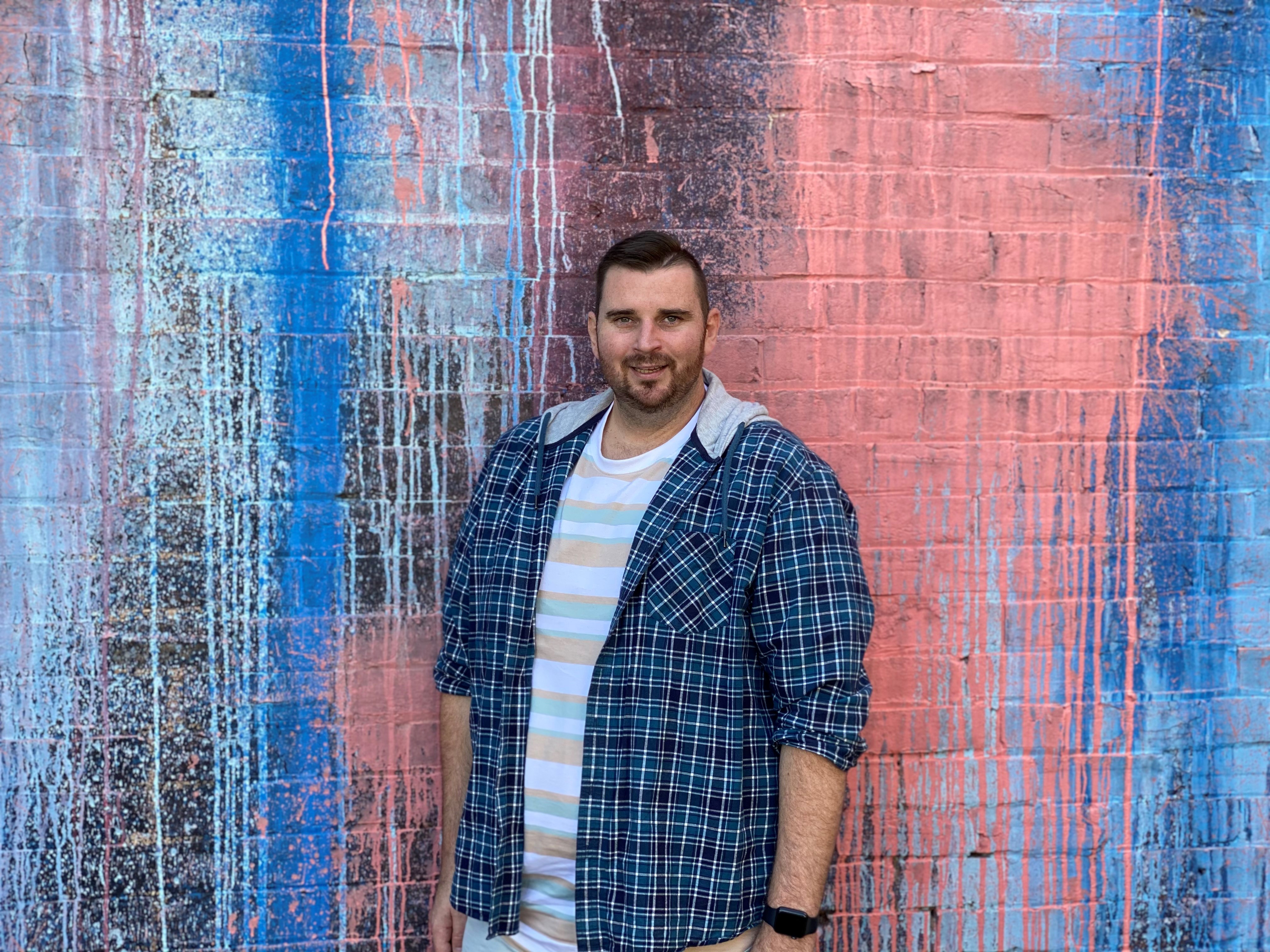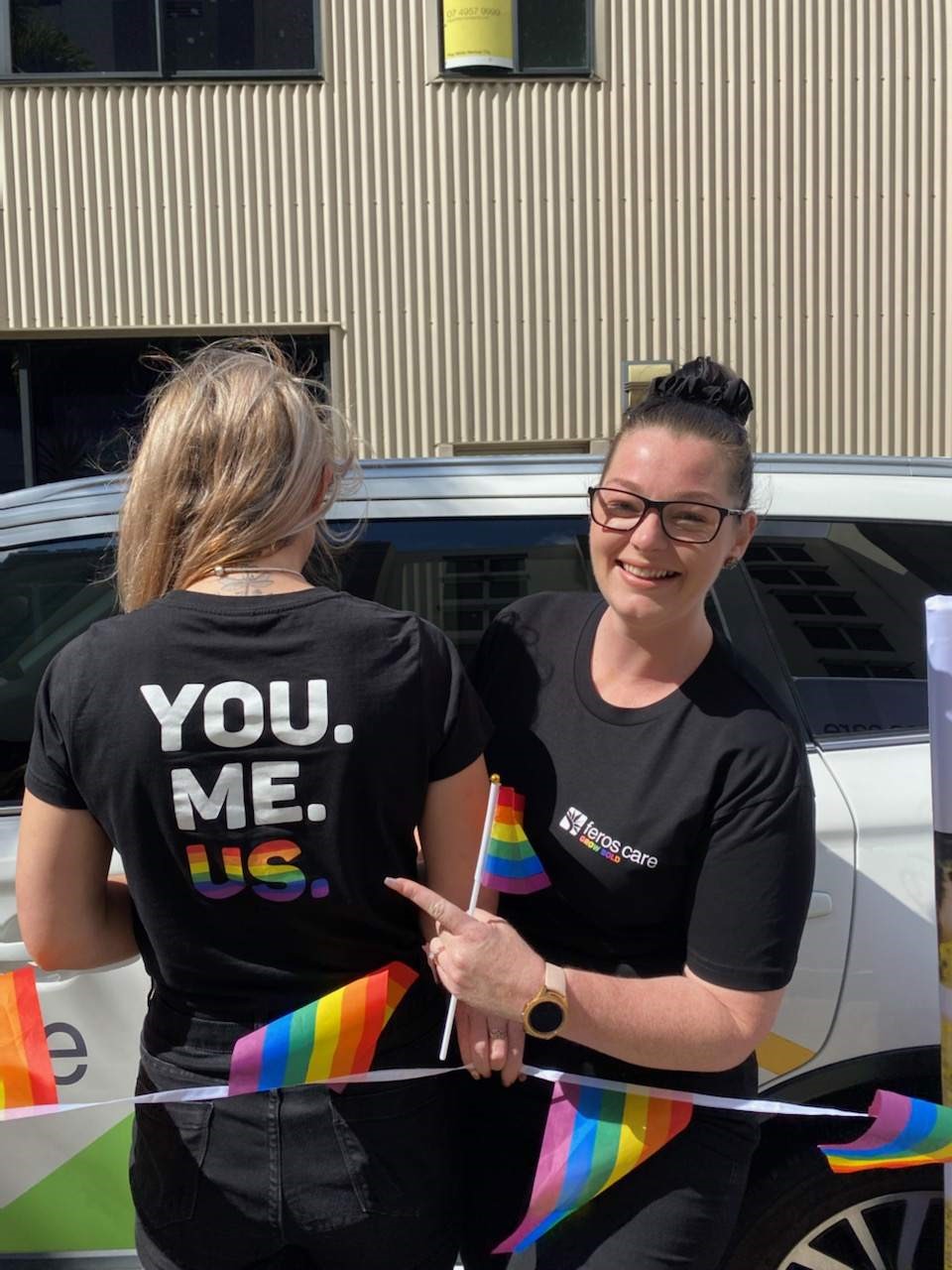The story of Feros Care’s Pride Support Network
06 June 2022

At Feros Care, we’re big on diversity.
And that doesn’t just mean putting up a rainbow flag in the corner of our office – it means taking steps towards a workplace where every individual feels safe and welcomed.
Our Pride Support Network is part of our efforts towards inclusivity. Inspired by office wide LGBTIQA+ awareness training several years ago, there was a consultation group formed before the network was born, ensuring that it would tick the right goals.
The Network has now been operating for 18 months and is open to both those who identify as a member of the LGBTIQA+ community and allies.
“Having a network in itself is an achievement,” says Troy Lawlor, the Chairperson of the Pride Support Network at Feros Care. “For some people, it can be a sensitive topic, but we’re not looking to do anything that offends anyone. We do things that play an important part in the inclusion space.”
The Pride Network has worked towards developing important, useful resources such as an inclusive language document. They also do planning for key events such as Pride Month, and are currently working towards achieving a rainbow tick accreditation for the organisation.
Troy shares some valuable insights into the Pride Support Network and its positioning below, along with top tips for allies in the community.
What’s the difference between celebration and awareness?
Pride Month is a way to acknowledge and celebrate the LGBTIQA+ community. It commemorates the Stonewall riots on June 28, 1969, where patrons of the Stonewall Inn in New York started fighting back against tolerated, regular harassment from the police department.
The entire month aims for recognition of the years of struggle for civil rights for those in the LGBTIQA+ community, and the ongoing pursuit of equal justice under the law and within our communities.
And that is why, Troy points out, awareness and recognition is so important - right alongside celebration.
“We don’t just think we can slap a rainbow sticker on something, or put on a shirt, and have it achieve something,” Troy says. “People don’t become more informed or more educated through celebration alone.”
“We know the importance of exploring a little bit more. Why are we having an awareness day? Why are we raising awareness? What are we recognising, paying homage to?
“It’s wonderful to go to a festival, a club or drag queen bingo and celebrate the community. But it’s also about understanding our history, where we have come from, what hardships the community had to overcome along the way.”
The world has changed - but not enough
It’s only over the last few years that the LGBTIQA+ community have seen better representation across social media, the TV shows and movies that we watch, the books that we read.
“We’re seeing a lot more characters from transgender & queer backgrounds as well as gender diverse roles,” Troy says. “It’s a significant improvement on what we saw ten, fifteen years ago, where you would be lucky to have one gay character, often portrayed as tokenistic.”
And this goes a long way to changing perceptions across the community, resulting in more respect for all - and much-needed changing attitudes.
 Troy Lawlor
Troy Lawlor
Troy himself didn’t come out until he was 27, although he knew from his teenage years that he identified as gay. “It was such a weight off my shoulders. Going back now, I would have come out earlier, maybe around the age of 19 or 20.”
He still remembers being in high school, and the local newspaper publishing a story about Brokeback Mountain. “They’d interviewed a guy who went to my school and he said - ‘It’s so disgusting that we have to see this as a film, two men being intimate with each other.”
“That stays with you. I didn’t want to be picked on or bullied. I lived in a small town, I didn’t want my mum or dad to run into someone and they have to deal with it too.”
“And just because it’s more widely accepted now, doesn’t make it easier for kids. It’s never easy to come out. It’s just good that there is more in the form of pop culture to give them the confidence to be who they are.”
How to be an ally of the LGBTIQA+ community
Even if you don’t identify as a member of the LGBTIQA+ community, you can be an ally. But there’s more to being an ally than just saying that you are okay with people who are gay, or transitioning, or using pronouns.
“It’s about standing up for the community. It’s recognising if people are being made fun of, or picked on, or being at risk or not safe in any way, and supporting them in calling others out on that.”
The same goes for the workplace. It’s essential to understand your immediate team; who you work with, and what a supportive workplace looks like for them. Where the gaps are, and how they can be bridged to form a more inclusive organisation.

“An inclusive organisation doesn’t just happen,” Troy points out. “It starts with everyone and it’s up to everyone to do their bit in education and support.” And it’s okay to not always know the right thing to say. It’s okay to be unsure on pronouns, or terminology. That’s what organisations and resources are there for.
“It’s like my first job. I worked at McDonalds. I didn’t know how to make a Big Mac. But you get the guide on how to do it, you get procedures, you have a manager to ask.
“In the same way, if an individual does the research on something to do with the rainbow community, they might be able to learn how to navigate something that they didn’t previously know how to navigate. And if they’re still really confused, that’s where a member of the community – or the Pride Support Network - is there to help.”
Click here to find out more about the projects we're doing to create more inclusive communities.